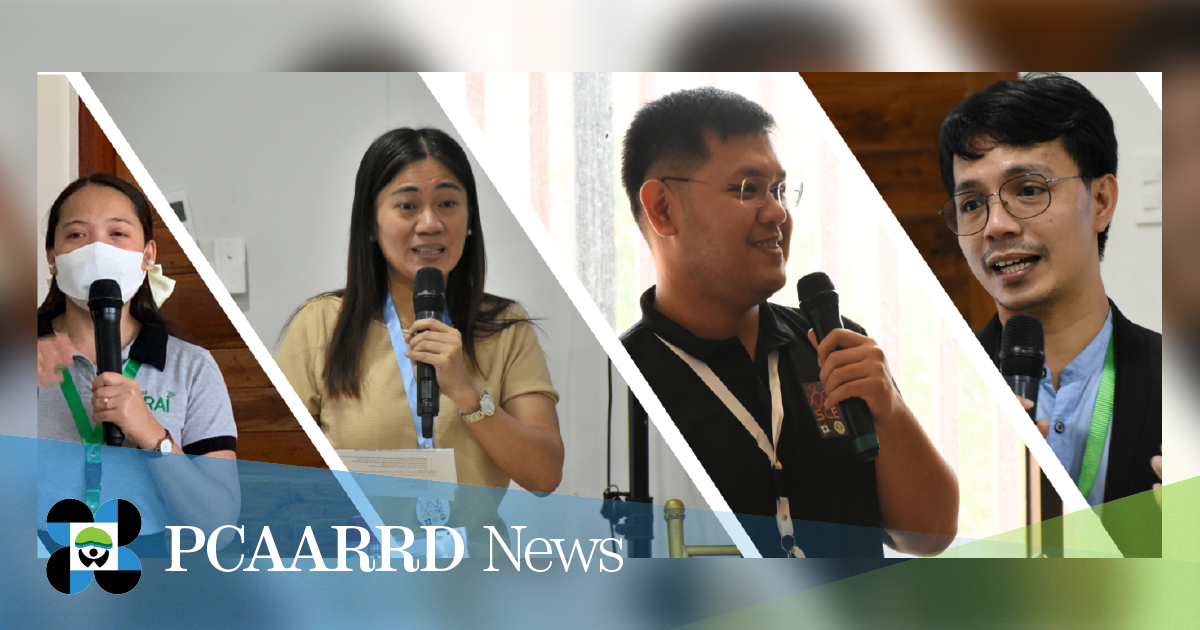Four of the supported and monitored projects of the Philippine Council for Agriculture, Aquatic and Natural Resources Research and Development of the Department of Science and Technology (DOST-PCAARRD) were highlighted in the breakout sessions on Climate Disaster Resilience, Food Security and Agriculture, and Digital Transformation during the third day of the International Smart and Sustainable Cities & Communities Exposition & Networking Engagement (iSCENE 2024).
The activity was participated by individuals from various local government units and non-government agencies, and the private sector. Speakers included Ms. Rosemarie Areglado from the University of the Philippines Los Baños (UPLB) for Smarter Approaches to Reinvigorate Agriculture as an Industry in the Philippines (Project SARAi), Dr. Ronnie Concepcion II from De La Salle University (DLSU) for the Green Freshness Classification System, Dr. Irma Plata of Isabela State University (ISU) for Agroinformatics Solution for 3 Major Cassava Diseases, and Dr. Junar Landicho of University of Science and Technology of Southern Philippines (USTP) for Bamboost.
The breakout sessions aimed to introduce smart technologies that resulted from research and development (R&D) initiatives of both the public and private sectors to key decision-makers, participants, and the general public.
SARAI champions for climate and disaster resilient agriculture
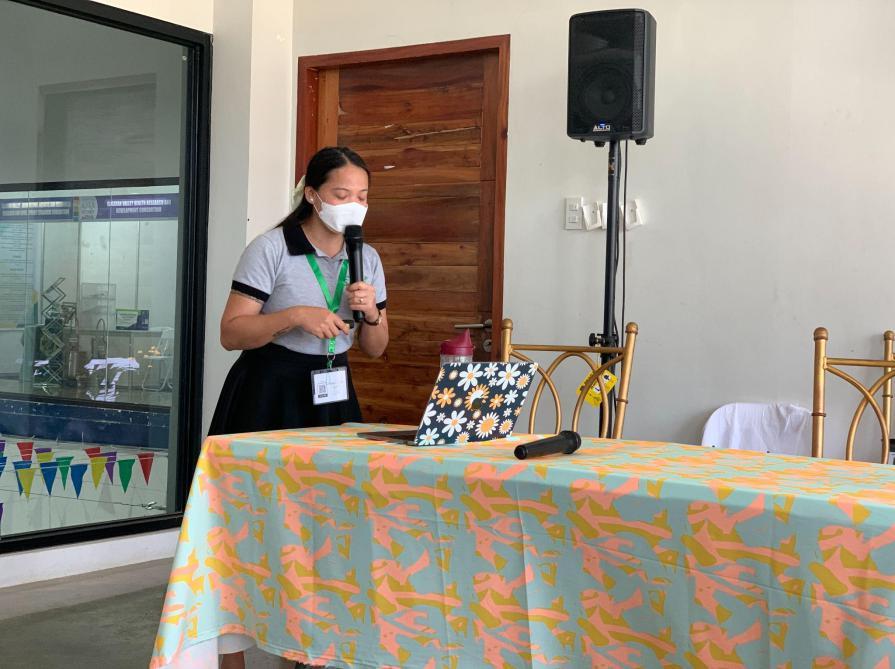
Ms. Rosemarie Laila Areglado of UPLB, opened the conference with the pressing challenges brought about by climate change, specifically within the agriculture sector. She offered SARAI as a comprehensive solution leveraging various technologies. With 11 co-implementing State Universities and Colleges (SUCs), 6 partnerships among 6 National Government Agencies, and more than 167 researchers working on the project, new technologies and practices are proactively being developed to anticipate challenges, optimize yields, and ensure a more sustainable food system for all.
SARAI integrates remotely sensed data, ground data, mobile applications, and crop and weather data to create a powerful early warning and cropping decision support system for farmers. This system empowers them to make informed choices to optimize crop yields and manage risks.
One of the key highlights of SARAI is the Smarter Pest Identification Technology (SPIDTECH). This innovative Android application allows digital identification of insect pests and diseases affecting the nine priority crops covered by SARAI. By enabling early and accurate pest identification, SPIDTECH empowers farmers to take timely action, minimizing crop damage and associated losses. It equips them with the knowledge to implement proper pest management strategies for their crops.
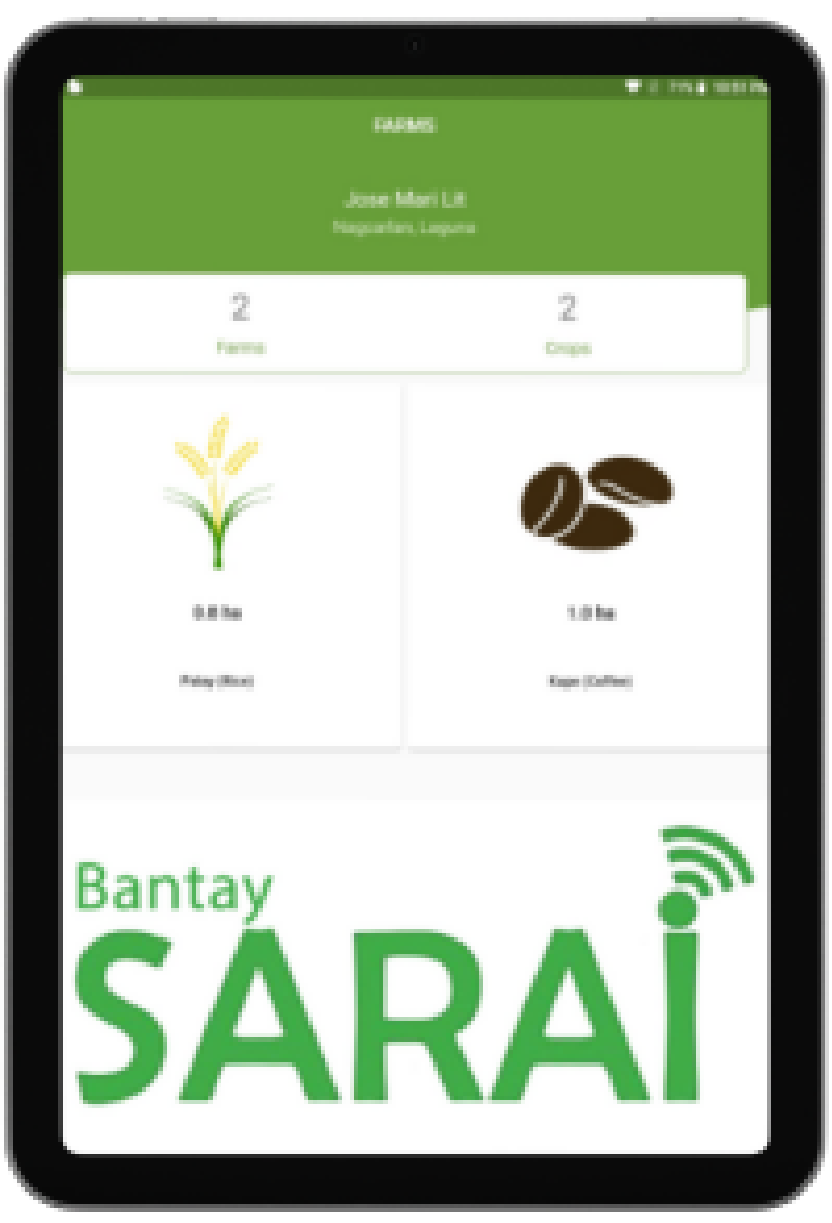
Ms. Areglado also introduced Bantay SARAI, a digital platform designed to revolutionize agricultural data collection. This user-friendly system facilitates the gathering of farmer information, planting, and harvesting data alongside other relevant Remote Sensing-based Biophysical (RSBSA) data. Bantay SARAI aims to establish a dynamic, real-time, and efficient online system for agricultural monitoring, offering a significant improvement over traditional pen and paper surveys.
The presentation also showcased the Community-Level Sarai Enhanced Agricultural Monitoring System (CL-SEAMS). This system leverages Geographic Information Systems (GIS) and Satellite Remote Sensing to provide a comprehensive agricultural monitoring and forecasting solution. Notably, CL-SEAMS prioritizes accessibility by utilizing free and open-source satellite data and Geographic Information System (GIS) software programs, such as QGIS and Google Earth Engine. This design choice allows easy adoption by Local Government Units (LGUs), empowering them to monitor farms remotely using satellite data. Processed satellite data within CL-SEAMS generates vegetation indices that not only identify crop types but also offer valuable insights into crop health.
Beyond crop monitoring, CL-SEAMS demonstrates its versatility by extending its functionalities to flood monitoring and damage assessment for large areas of land, eliminating the need for field visits. This capability offers significant advantages in terms of efficiency and resource allocation during disaster response efforts.
Ms. Areglado's presentation provided a compelling overview of SARAI and its suite of technologies. By harnessing the power of data and digital tools, SARAI equips farmers and agricultural stakeholders with the knowledge and resources necessary to navigate the challenges posed by climate change, fostering a more resilient and sustainable agricultural future.
New technology to modernize Benguet’s green leafy vegetable postharvest value chain
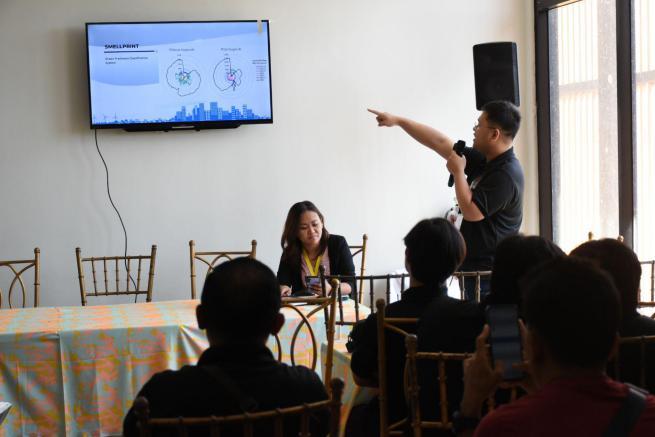
Dr. Ronnie S. Concepcion II of DLSU opened his presentation by explaining how lettuce crops are affected by fungal diseases and treated with fungicide to extend its shelf life and quality.
Use of fungicides to help control these diseases can harm the environment and pose health risks to both those who apply them and consume the treated crops.
The project team is developing the Green Freshness Classification System (GFCS) as an output component of the e-Asia Joint Research Program (JRP) project, “Towards Green Smart Cities: Improving Green Leafy Vegetables Post-Production and Distribution through Computational Intelligence,” which can help minimize potential harm to consumers.
This non-invasive classification system is designed to combine computer vision and gas sensors to accurately guide buyers on the freshness and potential fungicide traces of their green leafy vegetables. It can also classify and detect the three varieties of lettuce through Deep Neural Networks (DNN).
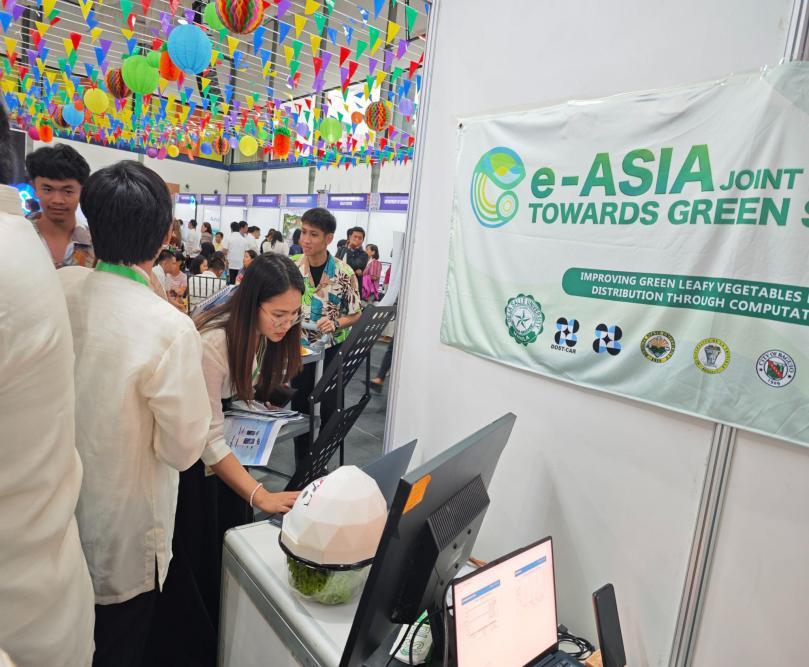
Furthermore, he elaborated on their project’s plans to integrate technology directly into trucks and a mobile application. This advancement will allow them to monitor the freshness of produce throughout its entire journey, ensuring that it arrives at its destination in optimal condition.
By seamlessly integrating technology into both the trucks and a dedicated mobile app, this project promises to modernize the way fresh green leafy vegetables are transported across Luzon from Benguet Agri-Pinoy Trading Center.
This real-time monitoring system will empower all parties involved – from farmers to distributors to retailers – to ensure optimal freshness and minimize food waste, ultimately leading to a more efficient and sustainable food supply chain.
Bamboost app to empower bamboo businesses in the Philippines
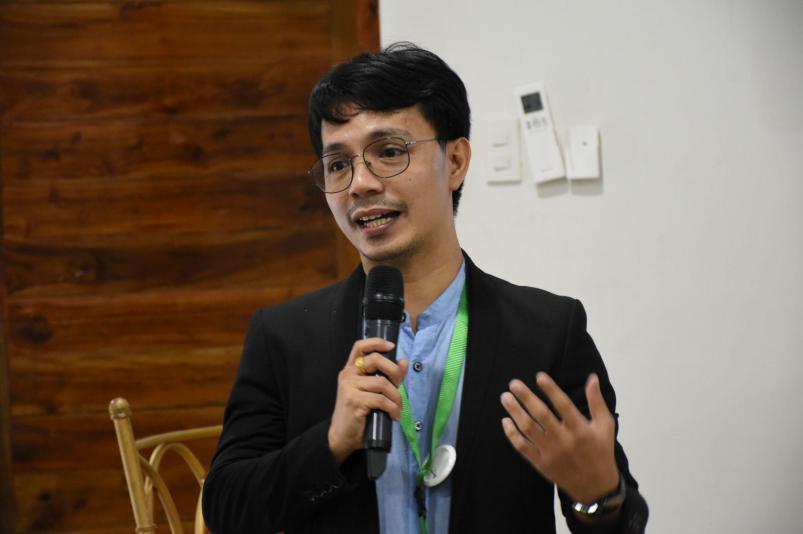
Dr. Junar Landicho during the Digital Transformation Breakout Session. (Image credit: ACD, DOST-PCAARRD)
Dr. Junar A. Landicho of USTP introduced the Bamboost ecosystem to the participants of iScene 2024’s Digital Transformation Breakout Session as a solution to the challenge of enhancing digital inclusivity within the bamboo value chain.
Bamboost aims to bridge the digital divide by scaling up essential services and strengthening online marketing opportunities for bamboo products and connect potential buyers directly to bamboo producers and processors. By consolidating local products and suppliers in a centralized location, the app opens the gates to improving market access for rural businesses.
Currently, the Bamboost’s second implementation phase is being supported by DOST-PCAARRD, building on its Phase 1’s successful introduction to the provinces of Iligan, Iloilo, and Bukidnon. The project’s Phase 2 allows the team to improve the app to the specific needs of bamboo businesses through a comprehensive assessment of its adoption rate and effectiveness as a marketing platform, as well as strengthen the capacities of the members of partner agencies on how to utilize Bamboost effectively.
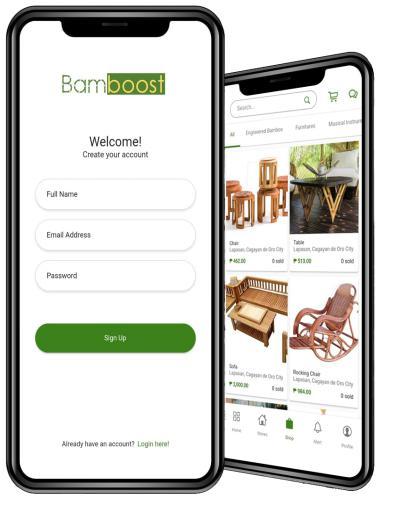
Bamboost application. (Image Credit: USTP)
The project also aims to equip bamboo farmers with knowledge on the location of suppliers, bamboo pole characteristics, and quality needs of their customers through its capacity building workshops with local producers and manufacturers. This enables the stakeholders of the bamboo value chain to improve their production and competitively price their products accordingly.
Through the development of a user-friendly and streamlined platform for bamboo manufacturers and consumers with Bamboost, Dr. Landicho’s breakout session calls for a future where fair trade for the Philippine Bamboo industry exists through digital transformation enabled by S&T-based solutions.
Agroinformatics solution poised to advance management of local cassava farms
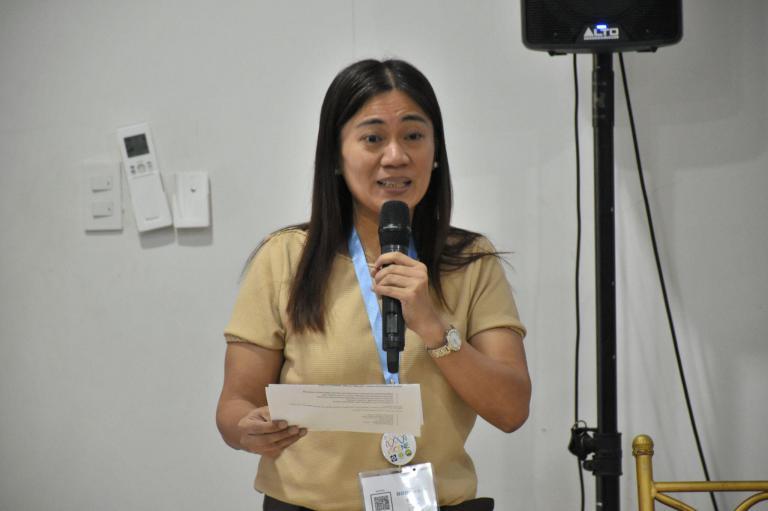
Dr. Irma T. Plata during iScene 2024’s Digital Transformation Breakout Session. (Image credit: ACD, DOST-PCAARRD)
Dr. Irma T. Plata of ISU discussed how despite the Philippines is being among the top 10 cassava-producing countries in the Asia Pacific Region, 440 hectares of Cassava in Quirino and Isabela provinces are in danger of decreasing production from 8 tons per hectare to 30 tons per hectare due to the devastations of three major diseases: Cassava Phytoplasma Disease (CPD), Bacterial Blight Disease (BBD), and Brown Leaf Spot Disease (BLS).
With the aim of reducing the effects of the three major diseases in local cassava farms, Dr. Plata and her project team are developing an Agroinformatics Solution that would help Municipal Agricultural Offices (MAOs).
The app tracks the spread of the disease infestation and cassava production on each farm and cooperatives through GIS mapping and offers statistical information on the summary of cases by location through data analytics. Through the system, farmers would be able to track their plant’s health and diseases as well as access modules regarding cassava farming. It would also allow cooperatives to request a treatment schedule and manage their database of partner farmers.
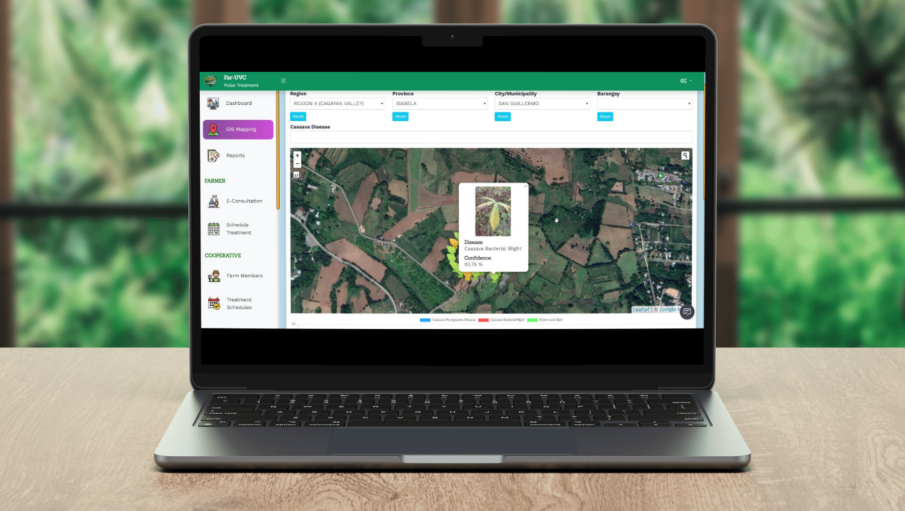
Currently, the Agroinformatics Solution prototype is being tested on a cassava farm in Cabugao, Cauayan City, Isabela owned and farmed by Mr. Gil Ancheta, a resident of Cauayan City. A total of 36 cassava plants are being evaluated with a combination of KU 50 and Rayong 72 and 5 varieties as test samples, which were randomly selected at the experiment site. According to local farmers, these cassava varieties produce tubers that are highly sought-after by major buyers in the area.
Afflicted cassava plants are also undergoing pulse treatments every two weeks in order to evaluate the technology’s effectiveness in suppressing the three major diseases of cassava. Dr. Plata’s breakout session advocates alternative disease control methods that are safer and non-invasive to the farmers’ health and environment, challenging the conventional reliance on chemical intervention.
Through harnessing the power of data analytics and machine learning to provide real-time insights into the plant health and crop disease management practices, farmers can make informed decisions about treatment schedules to maximize yield, ultimately leading to resurgence of the cassava industry in Isabela.

